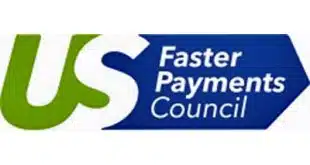With more consumers paying bills electronically than are receiving them that way, a startup that lets consumers receive and store digital copies of their bills announced on Tuesday it is introducing a payment service aimed at closing that gap.
Seattle-based doxo Inc., which in October launched a document-management service modeled on social networks like Facebook, has two billers on board for its new payment service, which it calls doxoPAY. The payment service taps users’ checking accounts and relies on the automated clearing house to credit funds to billers’ accounts. Steve Shivers, chief executive of doxo, tells Digital Transactions News more billers will be announced this month to join the current pair, Sprint-Nextel and Kansas City Power & Light.
With doxo, consumers can create an account and list billers they would like to receive digital bills from. Once a biller joins the network, it can create its own profile page and start delivering e-bills to everyone who has listed that biller in his account. E-bill delivery also shuts off paper delivery. Documents can include statements, receipts, privacy notices, and other documents as well as bills. The service, while free to consumers, charges billers a fee per document served.
Shivers says the service hopes to close what he calls an “adoption gap” between the proportion of consumers who pay bills online and those who actually receive e-bills rather than paper bills. Some three-quarters of consumers who pay bills electronically receive their bills in the mail, he says, despite years of campaigning by companies to convert people to e-bills. “Businesses have been pushing people to go paperless for a decade now,” he says. “More than half of consumer bills are paid electronically, but paperless adoption for many companies has not plateaued but is at a very slow growth [rate].”
The importance of paper less billing, Shivers says, lies in what it can save billers in paper, printing, and postage costs. For example, while Shivers will not disclose doxo’s fee to billers, he says it comes to a sum that is 80% less than the cost to send a paper document. Doxo charges a higher fee for bills, or “pay documents,” as doxo calls them, to cover the cost of payment processing. Billers can use doxo’s application programming interface (API) to link to the service. Shivers says integration typically takes three to six weeks for large companies.
By offering a free service with just one password to manage, doxo hopes to overcome consumers’ reluctance to give up paper, which in turn will induce more billers to join the network, the company hopes. The service also lets consumers sort and organize their documents into digital files for retrieval at any time and alerts users when bills are due to be paid. And consumers worried about record-keeping retain ownership rights to their documents, doxo says. “It’s not that [consumers] love paper, it’s just that they haven’t found a good substitute,” says Shivers.
Building a “critical mass” of consumers, as well as billers, will be crucial for doxo, says Mark Schwanhausser, a senior analyst at Javelin Strategy & Reserarch, a payments-research firm in Pleasanton, Calif. This, he says, is the familiar “chicken-and-egg” problem typically faced by new payments networks.
It won’t be an easy problem to solve. Since consumers have to create an account to use doxo, the startup will have to invest heavily in consumer marketing, Schwanhausser says. And most consumers are likely to trust their banks more than non-bank third parties for payments, he adds. A further problem lies in weaning users off of paper. “Consumers are making baby steps toward giving up on paper,” he says, while doxo requires that they “go all in” on converting to paperless billing. “That’s going to be a fundamental challenge,” he says.
Still, Shivers is convinced doxo has found the key to cracking that challenge. The problem with most e-billing efforts, he says, is that they attack the issue as a payments matter rather than as a way to make life easier and more organized for consumers. “You’ll never get massive adoption if you treat it as a billing problem, he says. “It’s a file-cabinet problem.”





